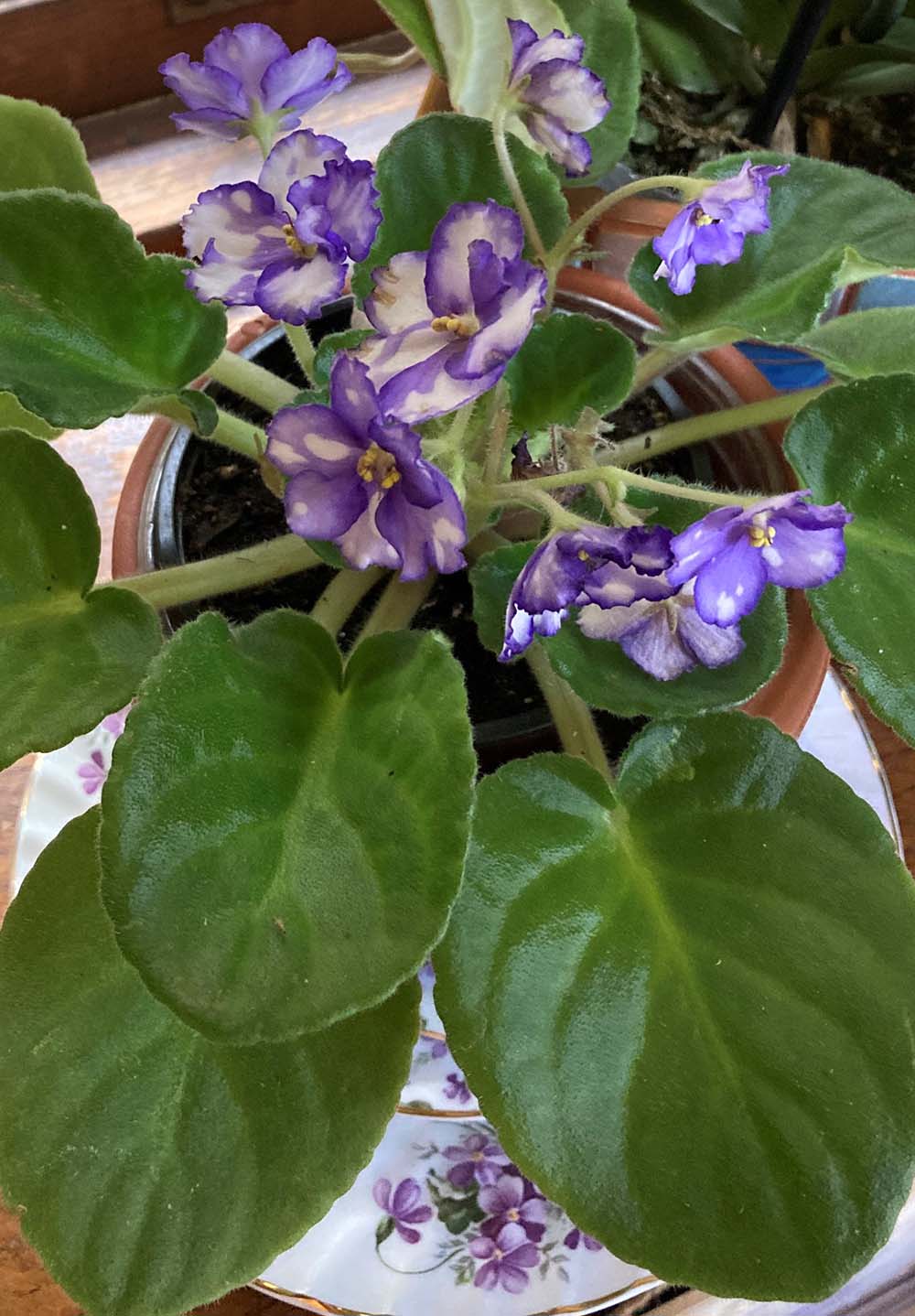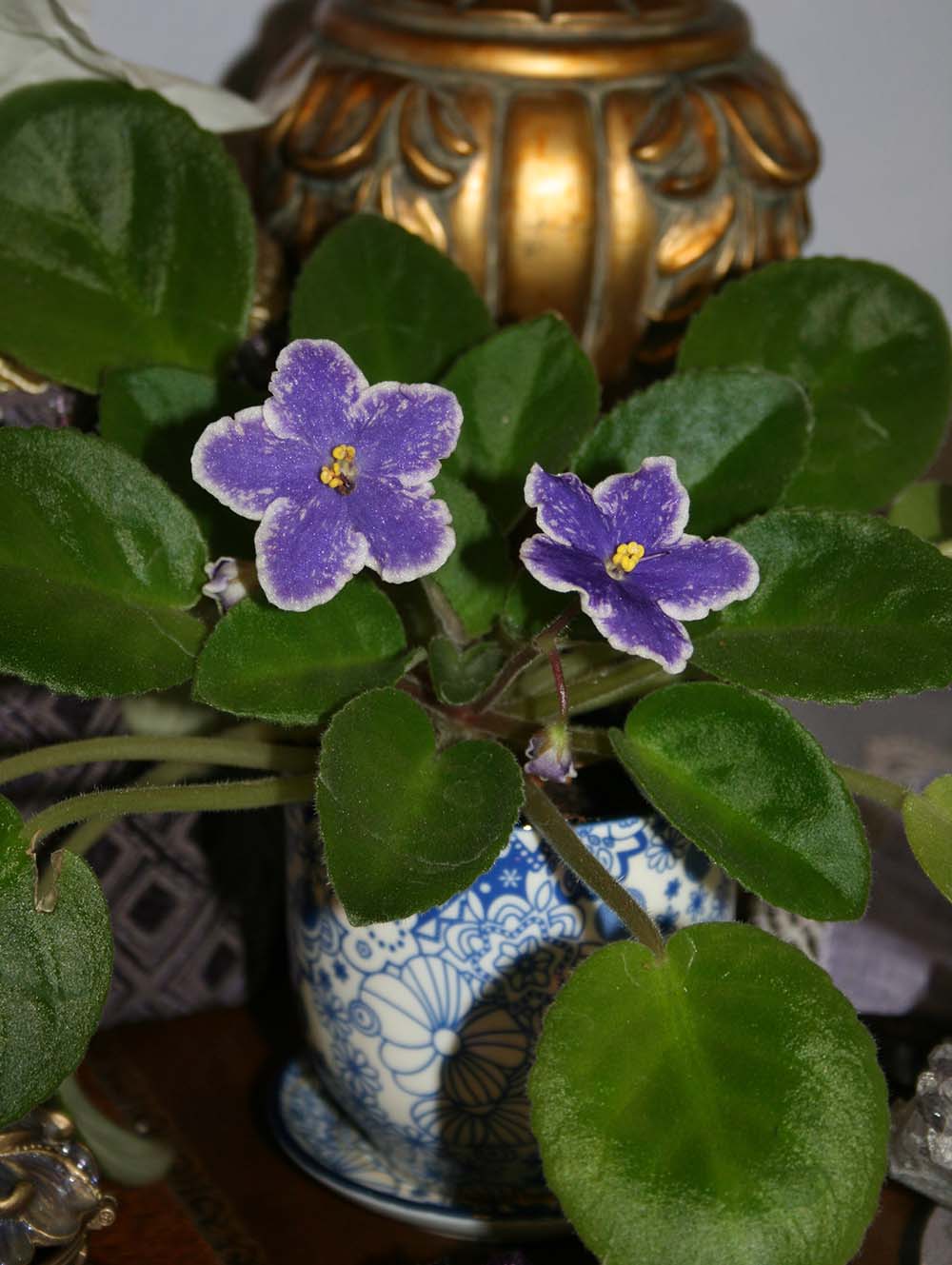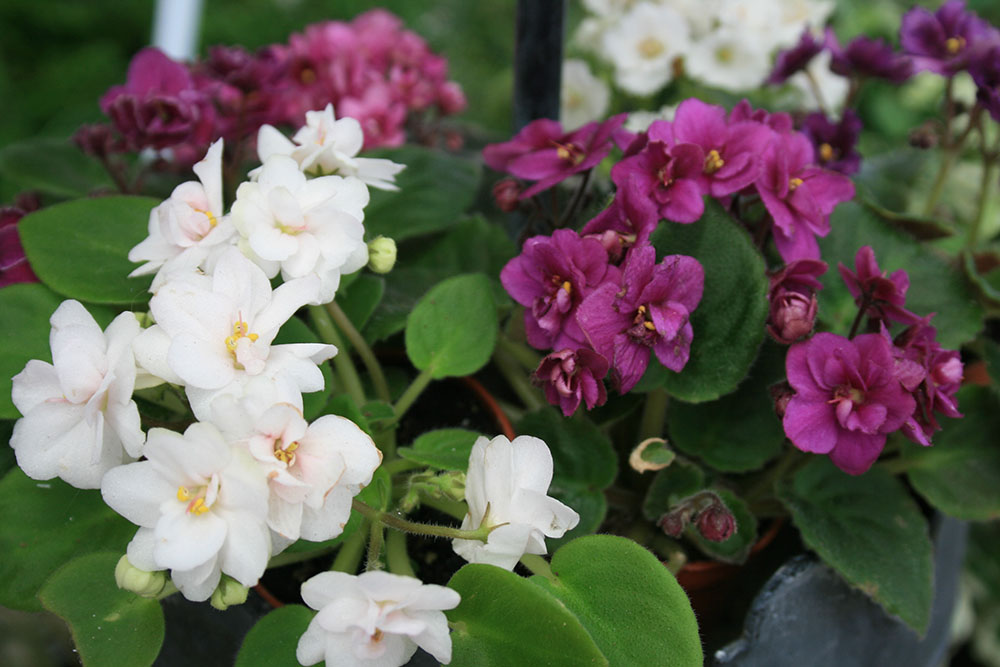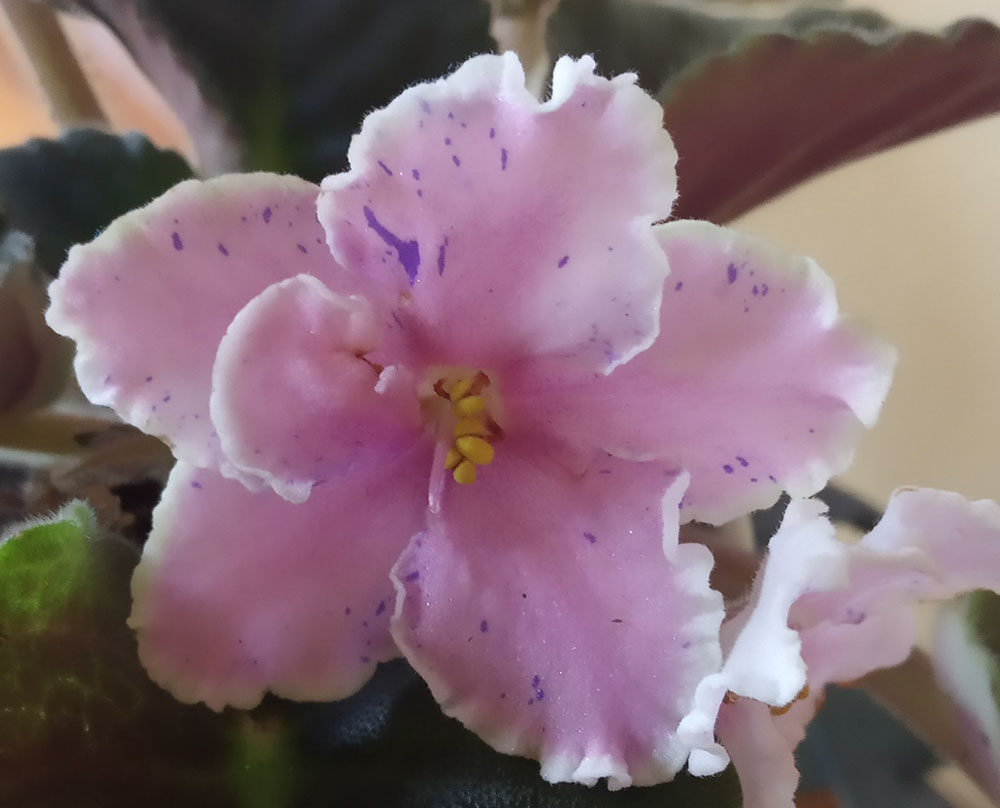About African Violets
There are about 21 species and many cultivars of this fast-growing, low and mounding plant with colorful flowers that come in a variety of colors in clusters of single, semi-double, double and sometimes ruffled or fringed flowers.
Cultivation Requirements: Filtered light–bright Northern exposure is ideal. Rich, acidic, well-draining soil. Keep evenly moist. Fertilize every 2 months.
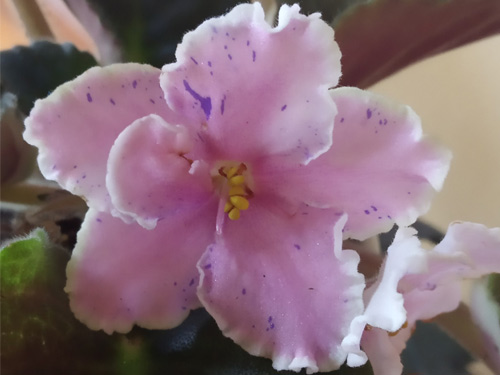
| Genus Name | Saintpaulia ionantha |
| Common Name | African Violet |
| Plant Type | Houseplant |
| Light | Part Sun |
| Height | 2 to 6 inches |
| Width | 4 to 16 inches |
| Flower Color | Blue, Pink, Purple, Red, White |
| Foliage Color | Blue/Green |
| Season Features | Fall Bloom, Reblooming, Spring Bloom, Summer Bloom, Winter Bloom |
| Special Features | Low Maintenance |
| Propagation | Leaf Cuttings |
Of all indoor flowering plants, African violets (Saintpaulia ionantha) are some of the most stunning. The flowers come in a wide variety of colors, including pink, purple, white, cranberry, blue and variegated forms. Flowers are single, semi-double or double and can be scalloped, ruffled or fringed. The plant’s leaves are oval-shaped and slightly fuzzy.
Origin African Violets
East Africa African violets are surprisingly easy to grow indoors. Follow these instructions, and you can have blooms throughout the year in your indoor garden.Lighting African Violets
African violets prefer bright indirect light for 10 to 12 hours a day. They will bud up when placed in an unobstructed northern window. They also grow well under full-spectrum lighting. African violets also require 8 hours of darkness a day to flower well.Watering African Violets
Keep African violets moist but not soggy. Avoid letting the soil dry out, as that will inhibit flowering. Water with warm to tepid water from the bottom. If you water from the top, avoid wetting foliage. African violets also do well in wick watering systems.
Video on how to create a wick watering system: Watch on Youtube




